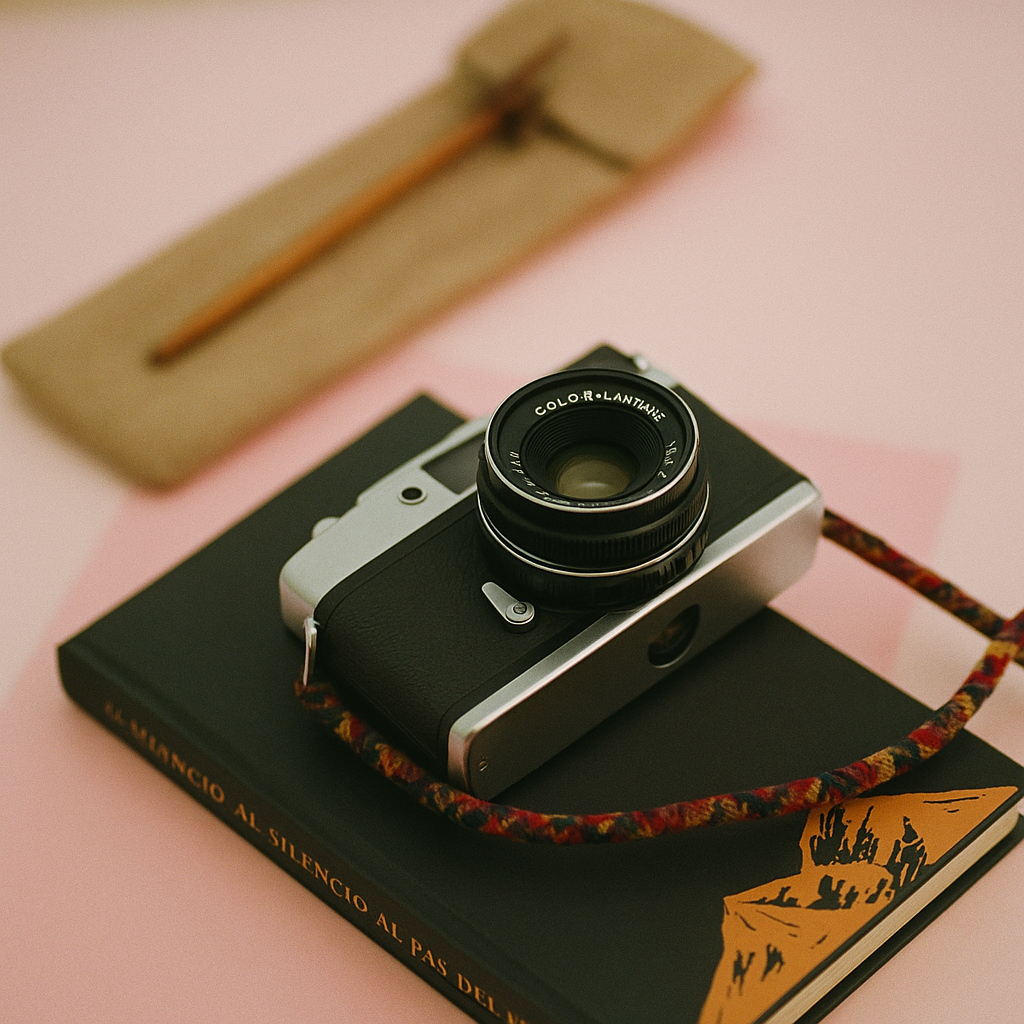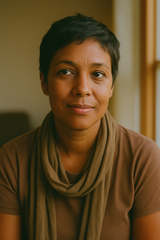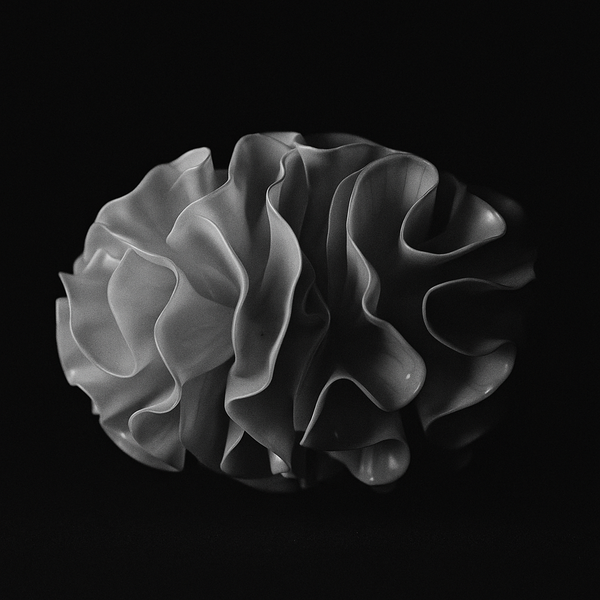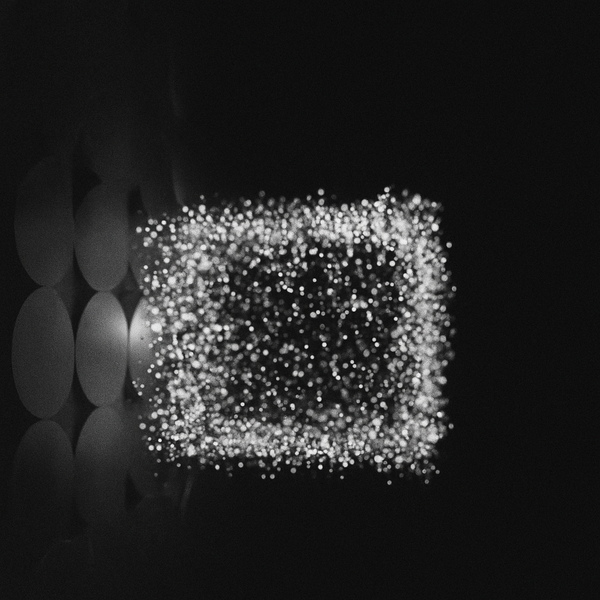The Art and Rituals of Sketching in a Tech-Driven World

In his Brooklyn studio, artist Bryce Wymer fills sketchbook after sketchbook with drawings that blur the boundaries between observation and imagination. This detail, mentioned briefly in a recent Colossal feature, caught my attention—not because it's unusual (many artists keep sketchbooks), but because it persists quietly. In our screen-saturated, algorithm-driven moment, this analog ritual continues. It becomes more than technique: both refuge and a particular way to attend to the world technology hasn't learned to replicate.
I've been thinking about what makes sketching endure. Not as superior to digital creation—Wymer himself merges analog and digital in his finished work—but as a complementary practice with its own distinct qualities. The kind of thing you notice only when you're slightly outside looking in, when you're paying attention to what people do rather than what they say they do.
Wymer's sketchbooks reveal an artist working at the crossroads where social realism meets surrealism, developing visual narratives that weave together identity, mythology, and human experience. His figures emerge from careful observation, yet they transform into something otherworldly—disjointed, sectioned forms dissected into overlapping elements and cross-sections, revealing internal layers and exploring quiet tension. This fusion reflects how sketching itself operates as a bridge between the conscious and unconscious mind, between what we see and what we imagine.
The ritualistic nature becomes apparent when you watch someone sketch. There's the selection—the weight of paper, the hardness of pencil, the size of the book. There's the physical positioning, the angle where wrist meets page, the distance between eye and subject. These choices, seemingly minor, create a framework for attention our devices can disrupt. Where technology often fragments our focus across multiple tabs and notifications, sketching demands presence. The hand moves, the eye observes, the mind translates—all in real time, with no undo button, no filters, no algorithmic suggestions for improvement.
This immediacy distinguishes sketching from digital creation, though perhaps "distinguishes" isn't quite right—it's more that each medium has its own relationship to time and decision. Each mark in a sketchbook becomes permanent record—a moment's choice captured. The ghost lines from changed minds remain visible. Mistakes transform into unexpected discoveries. This transparency—different from the seamless surface found in much digital art—reveals thinking itself. We see not the final image alone but the journey toward it, the hesitations and certainties recorded in varying line weights and repeated contours.
The meditative quality offers something our productivity-obsessed culture struggles to value: time without measurable output. A sketch might take five minutes or five hours. It might lead to a larger work or exist only for itself. This freedom from predetermined outcomes creates space for what psychologists call "soft fascination"—gentle engagement that captures attention effortlessly while leaving mental space for reflection and wandering thoughts, restoring mental energy without requiring directed focus. It's the same quality found in gardening, walking, or watching clouds—activities that can restore mental energy rather than deplete it.
Consider how differently many people approach a blank page versus a blank screen. The page asks nothing. It doesn't auto-save or track our time spent. It doesn't suggest templates or warn about unsaved changes. This absence might seem limiting, but it can liberate. Without predetermined formats to follow, the sketcher must invent their own systems, develop their own visual language. Wymer's sketchbooks demonstrate this evolution—he's spoken about how they've evolved from early graffiti tags, DIY show flyers, and zine layouts from his punk and hardcore music scene background into an essential part of his creative process, where his unique vision emerged gradually, a personal mythology built stroke by stroke.
The social aspect also resists digital logic in interesting ways. When someone sketches in public—in a café, a park, a subway car—they create a small bubble where concentrated attention lives. Others often recognize and respect it. Many people instinctively lower their voices near someone drawing, understanding they're witnessing a form of deep listening. This stands in contrast to public phone use, which can feel invasive, pulling private conversations into shared space. The sketcher, though equally absorbed, remains connected to their environment. They're observing it, honoring it through attention.
Traditional sketching groups, where artists gather to draw from life, maintain relevance because they offer what online tutorials cannot: shared presence and real-time problem-solving. Watching another artist tackle the same subject from a different angle, with different tools, teaches through proximity. These sessions create community without requiring conversation, connection through parallel practice rather than direct interaction. In our age where social media prescribes engagement—likes, comments, shares—this wordless communion feels both ancient and quietly radical.
The constraints—the finite pages, the gradual dulling where pencil meets paper, the impossibility where perfect replication lives—teach lessons frictionless digital tools can obscure. When you can't endlessly adjust and refine, you learn to commit, to accept imperfection, to find beauty in the unplanned. Wymer's work shows this acceptance transformed into strength. His figures aren't perfectly proportioned because perfect proportion isn't his goal. He's after something more elusive: the feeling a gesture carries, the weight a gaze holds, the suggestion where movement begins.
This acceptance connects to broader questions about how we create and consume art in digital spaces. Online, we're often trained to present polished final products, to crop out the messy edges. But sketchbooks resist this curation. They're chronological, honest, showing failed experiments alongside successful ones. They remind us mastery isn't about avoiding mistakes but about learning from accumulation, building understanding through repetition and variation.
The physical sketchbook also functions as external memory in ways digital files don't quite match. The coffee stain on a page, the way certain papers yellow with age, the indent from pressing too hard with a ballpoint pen three pages back—these material traces create a sensory timeline. Finding an old sketchbook becomes archaeological; each page excavates not images alone but the physical circumstances where their creation happened. The smudge from a rainy day, the careful lettering when you had time, the frantic scribbles when inspiration struck—all preserved in ways different from digital archives.
As our lives become increasingly mediated by screens, the simple act offers a form—careful attention without requiring wholesale rejection. It's not about choosing sides in some imagined war between analog and digital—Wymer himself moves fluidly between both. Instead, it's about preserving particular modes technology, for all its benefits, doesn't replicate. When artists fill their sketchbooks with surreal figures and reimagined myths, they're not creating art alone—they're maintaining a practice connecting them to centuries who've used the same basic tools to make sense of their worlds.
The continued relevance in our tech-driven society isn't despite its limitations but because they exist. In a world where digital possibilities seem infinite, the bounded page can offer relief. In a culture built on constant updates, the permanent mark provides a different kind—stability. In an economy where attention fractures across devices, the focused observation required becomes therapeutic. These aren't nostalgic retreats from modernity but necessary counterbalances to it, ways to maintain human rhythms in an accelerated age.
The ritual—morning pages, subway drawings, café observations—creates structure without surveillance, progress without metrics. It reminds us not everything valuable can be optimized, some forms emerge only through slow accumulation, the hand holding a pencil knows things the hand swiping a screen cannot access. In preserving these analog practices, we preserve more than technique. We preserve particular ways to attend to the world—ways that might make us more human, not less, in our digital age.
References
- https://www.thisiscolossal.com/2025/10/bryce-wymer-sketchbooks-drawings-illustrations
- https://www.artsy.net/artist/bryce-wymer
- https://francescasciandra.art/blog/the-enduring-relevance-of-drawing-in-the-digital-age
Models used: gpt-4.1, claude-opus-4-1-20250805, claude-sonnet-4-20250514, gpt-image-1




